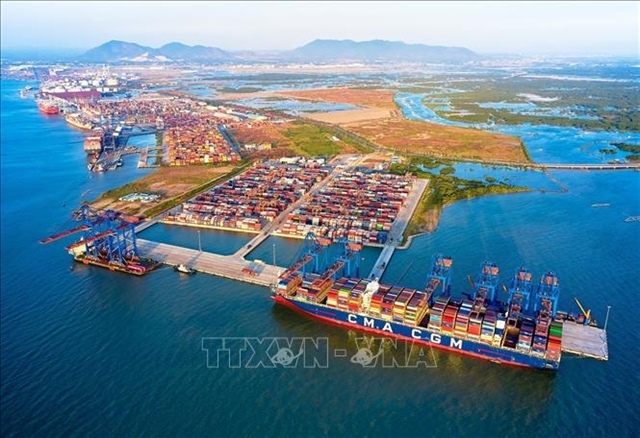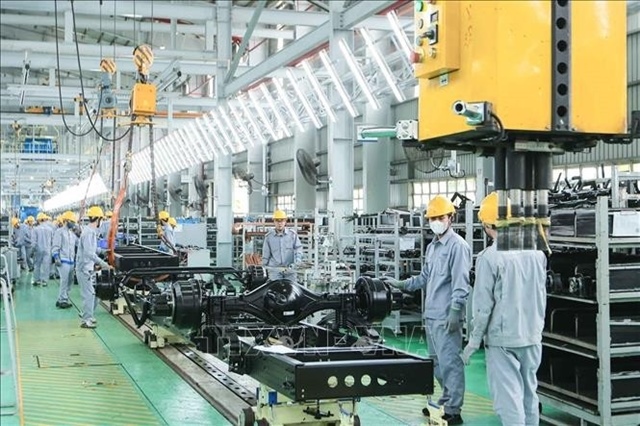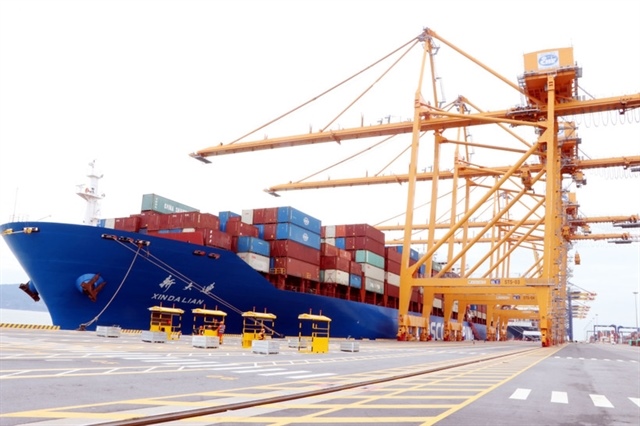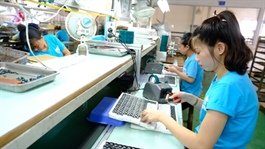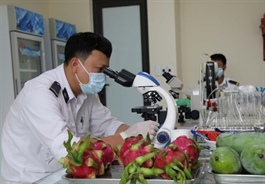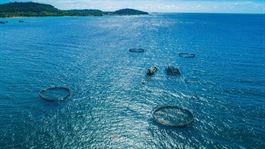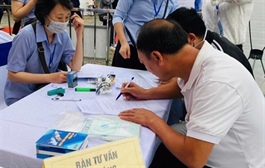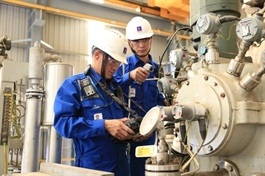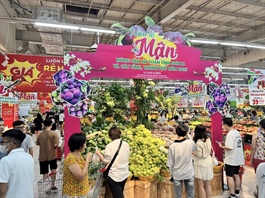Industrial production continues recovery but difficulties remain
Industrial production continues recovery but difficulties remain
The Index of Industrial Production (IIP) in May continued to recover, but enterprises are still facing difficulties due to the impact of increasing input production costs, according to the General Statistics Office (GSO).
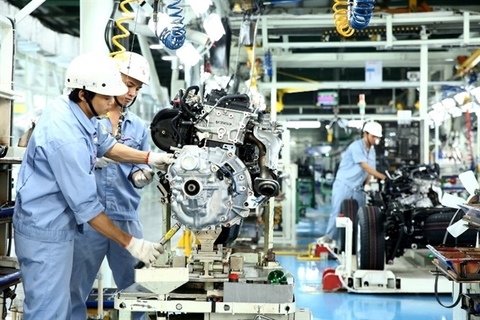
National industrial production changed more positively with IIP growth of 2.2 per cent in May over the previous month. — Photo mpi.gov.vn |
Do Thi Ngoc, head of GSO's Statistics Department, said national industrial production changed more positively with an IIP growth of 2.2 per cent in May over the previous month and 0.1 per cent over the same period last year.
However, due to the challenging situation of the world economy in the first months of 2023, the decrease in export orders affected domestic industrial production. Viet Nam's IIP in the first five months decreased by 2 per cent over the same period last year.
Of these, the water supply, waste-water treatment and management activities recorded the highest IIP increase of 6.4 per cent in the first five months. The electricity generation and distribution sector followed with 0.8 per cent.
Meanwhile, the mining industry and the processing and manufacturing sectors saw a decline of 3.5 per cent and 2.5 per cent in IIP, respectively.
In terms of localities, the GSO said in the first five months, 49 localities gained growth in this index compared to the same period of last year, while IIP decreased in the remaining 14 localities.
Of which, Gia Lai recorded the highest increase in IIP at 21.7 per cent. Tuyen Quang followed with the IIP growth at 18.6 per cent. Other localities achieving high growth rates included Bac Giang (15.9 per cent), Phu Tho (15.3 per cent), Hai Phong (13.4 per cent), Nam Dinh (13.3 per cent), Kien Giang (13.1 per cent), Phu Yen (12.3 per cent), and Hau Giang (8.3 per cent).
The GSO also reported that several essential industrial products showed an increase in IIP during the first five months of 2023, including sugar (31.1 per cent), gasoline (13.5 per cent), garments made from man-made fibres (10.6 per cent), NPK fertiliser (9.2 per cent), and televisions (7 per cent).
Meanwhile, some other products saw a reduction in IIP growth in the same period, such as automobiles (24 per cent), bar and angle steel (20.1 per cent), mobile phones (16.4 per cent), textiles from natural fibres and phone components (10.1 per cent each), and casual wear (9.8 per cent).
The office also pointed out that the businesses continued to face difficulties in the context of the global economic downturn affecting the domestic economy.
In the first five months, Viet Nam had 88,000 enterprises withdrawing from the market, up 22.6 per cent over the same period last year. The average registered capital of a newly established enterprise also decreased by 24.1 per cent.
According to Ngoc, in the context that the economy and business community need to be injected with capital to recover, the core inflation in the first five months of 2023 increased by 4.83 per cent, higher than the general inflation at 3.55 per cent is a challenge for monetary policy management.
Therefore, it is necessary to have a proactive and flexible monetary policy while ensuring inflation control and supporting economic growth.
In order to remove the difficulties as well as achieve the socio-economic development targets in 2023, GSO has proposed that the Government focuses on implementing solutions to maintain macroeconomic stability and proactive, flexible and efficient monetary policy in coordination with fiscal policies and other macro policies.
Especially, it is necessary to lower the policy interest rates and stabilise the lending interest rates to support the enterprises in recovery and development of production and business.
In addition, it should synchronously and effectively coordinate between monetary and fiscal policies to create favourable conditions for enterprises to access capital for production and business activities.
It needs to promote domestic production and consumption, especially the products made from domestic raw materials, and use domestic fuels to limit imports.
The Government is recommended to regularly review production and business activities to promptly remove difficulties such as lack of capital, high input material prices, and difficulties in product consumption.
The State must effectively deploy solutions to stimulate trade, service and tourism activities, expand and diversify export markets and products, and effectively exploit the signed free trade agreements (FTAs).
In addition, it focuses on drastically implementing solutions to promote disbursement of public investment capital, and the programme of socio-economic recovery and development.



